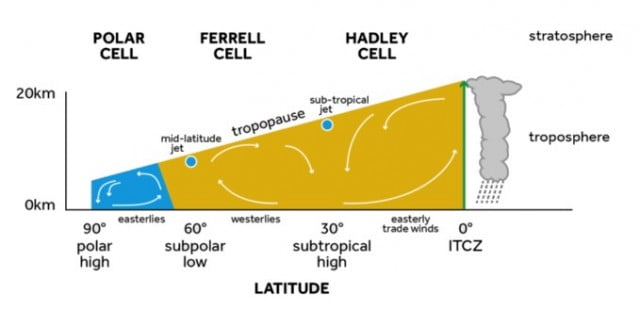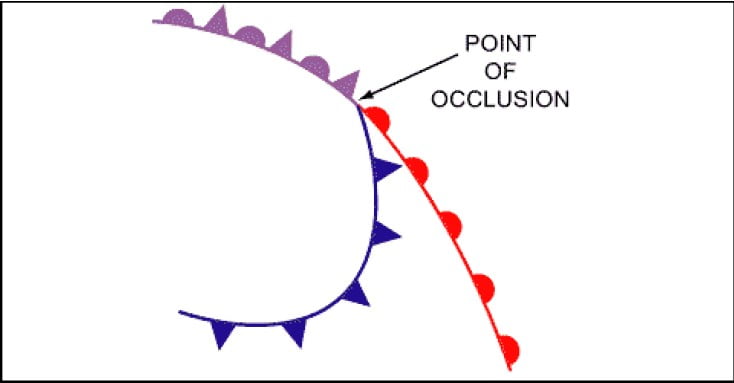Sailing Hazard
Sailing is one of the most weather-dependent sports. Unfortunately, wind is not just a useful source of power for sailing craft but also a hazard. Strong winds can capsize boats, either directly or in combination with the waves they may produce.
The wind is never steady. It always fluctuates between gusts of higher wind speed and lulls that may be so light as to be near-calm. However, sudden increases of wind on a larger scale can sometimes occur. These are called squalls and are often associated not only with strong, gusty wind but also with heavy rain.
The importance of any hazard varies with the skill level of the crew, the type of boat and the kind of sailing being undertaken. For example, a novice crew in a small boat may underestimate wind strength before setting off. This is an easy mistake to make, especially if they are launching from a relatively sheltered location. Sailors who are more experienced are unlikely to be caught out like this but are still vulnerable in other ways. Hard sailing, especially in colder conditions, can tire a crew very quickly. Exhaustion or exposure can creep up on them before they know what is happening. For example, a dinghy crew might be having great fun practising sailing across the wind, only to find when they feel they have had enough that they do not have the reserves of energy for a long struggle upwind or a tricky run downwind.
These days, yachtsmen do not have to rely on old folklore or gamble on good weather. All sailors should pay attention to weather forecasts. These are available through radio, television, the internet and other means of broadcasting.
The particular forecast that is most appropriate depends on the kind of sailing being planned. The shipping forecast broadcast on the radio is perhaps the most useful to offshore sailors. The terms used in it are precisely defined, and the information that is included in it on pressure changes and movements of weather systems is very useful to anyone with a deeper than average understanding of meteorology.
When yachtsmen study meteorology as part of a training course, either at sea or ashore, they are often asked to create a weather map from a recorded shipping forecast as an exercise. The Royal Yachting Association can provide forms called ‘Metmaps’ that make recording and interpreting the shipping forecast a lot easier. Completing one of these is a good exercise for anyone who wants to go into meteorology seriously. The ‘Metmap’ is a two-sided A4 form. On one side, a shipping bulletin broadcast by the BBC can be taken down. On the other, a simple up-to-date weather map can be drawn from the information contained in the bulletin.
The shipping forecast gives a lot of information about visibility at sea. This is because poor visibility can sometimes be a greater hazard than strong winds. The forecast will not only give a guide to overall visibility in terms of ‘good’, ‘moderate’ or ‘poor’ but will often indicate if visibility is poor for a specific reason, such as ‘visibility poor in showers’. This particular occurrence can give a sailor a real fright, as views of nearby vessels or navigation marks can be lost suddenly when showers occur.
Two possible hazards are not often mentioned in weather forecasts for sailors but usually are in forecasts for land areas:
 One of these is lightning, though the possibility of its occurrence may be indicated indirectly in a forecast or station report as ‘thundery showers’. In fact, lightning is not such a risk to sailors as it might at first appear. Boats are surrounded by a very good conductor of electricity – water – and unless the boat suffers a direct hit, which is unlikely, the current is dissipated much more quickly than on land.
One of these is lightning, though the possibility of its occurrence may be indicated indirectly in a forecast or station report as ‘thundery showers’. In fact, lightning is not such a risk to sailors as it might at first appear. Boats are surrounded by a very good conductor of electricity – water – and unless the boat suffers a direct hit, which is unlikely, the current is dissipated much more quickly than on land.
The other neglected hazard is exposure to sunlight and sunburn. Sailors are at particular risk for two reasons. First of all, yachtsmen can get an increased dose of sunlight because of reflections from the water. Secondly, they may not notice this because the wind will make them feel cool and unaware they are ‘cooking’. Many a sailor has returned to work on a Monday morning with a ‘yachtsman’s tan’ (from the neck up!). This might seem a nice problem to have, but all sailors should note the example of the America’s Cup crews, who often display extremely colourful suncream to protect against harmful solar radiation.
Despite the apparently long list of hazards described, sailing is, in fact, a very safe sport. It is also a sport where knowledge of meteorology can increase a participant’s enjoyment and even give a competitive advantage!
Acapulco in 1968, sailors competing in the Olympic Games had an unusual surprise from the weather. While not actually hazardous, it was certainly not pleasant. One day, following a sudden squall, the covers of the boats were covered with maggots, which had, presumably, been drawn up into clouds by a whirlwind or waterspout, only to fall out in a downpour of rain.
The year 1979 is famous to yachtsmen for the worst possible reason. In August of that year, during the Fastnet Race (from Cowes on the Isle of Wight to the Fastnet Rock [51°24’N 9°35’W] off south-west Ireland and back again to Plymouth), the fleet of yachts ran into severe storms and rough seas. Fifteen lives were lost. Despite ‘survival conditions’, many crews kept records of the severe conditions, based on their barometers and wind instruments. To the meteorologists who have analysed the Fastnet Storm and its structure, these records have proved invaluable. For a recent analysis of the storm, see the article by D.E.Pedgley in the August 1997 issue of Weather (Volume 52, pp.230-242).
Shipping forecasts are currently broadcast four times a day on BBC Radio 4 Long Wave. They are also available via the websites of the Met Office and the BBC Weather Centre. In shipping forecasts, the Beaufort Scale is used for describing wind strength. This scale originated in the days of sail but is now defined precisely in terms of the wind at a height of ten metres averaged over a ten-minute period.




